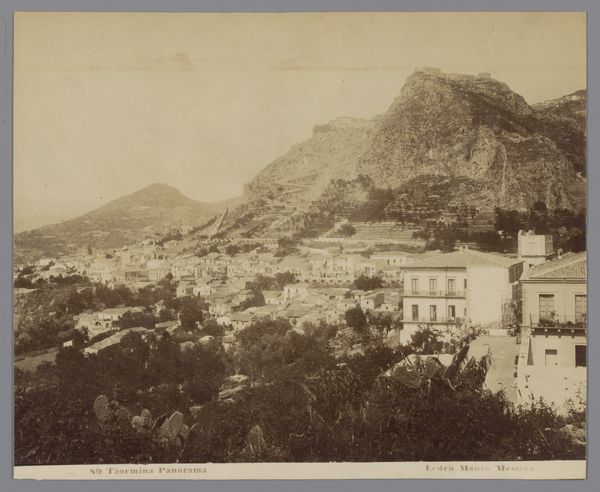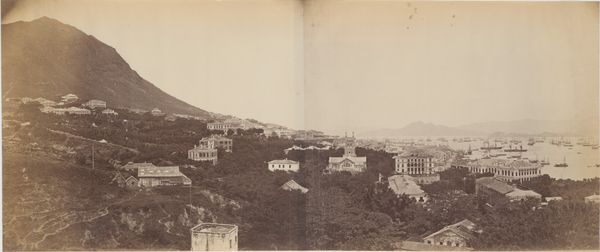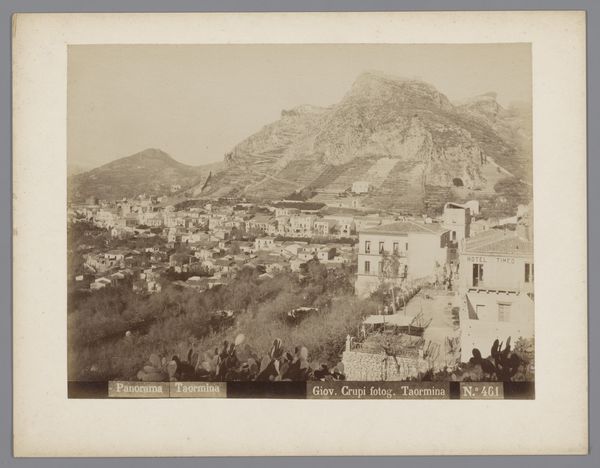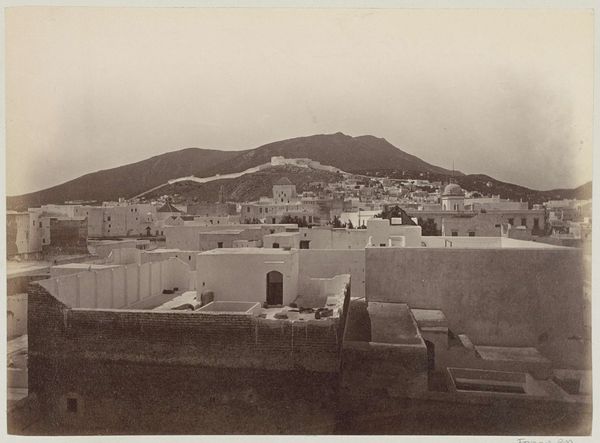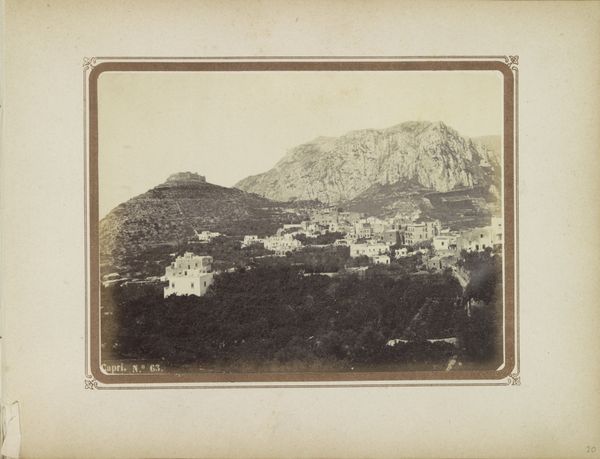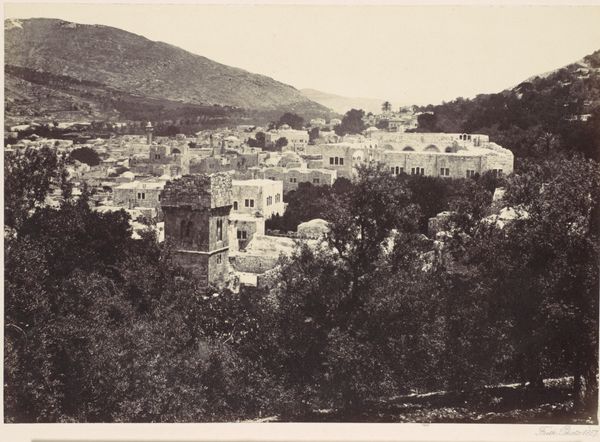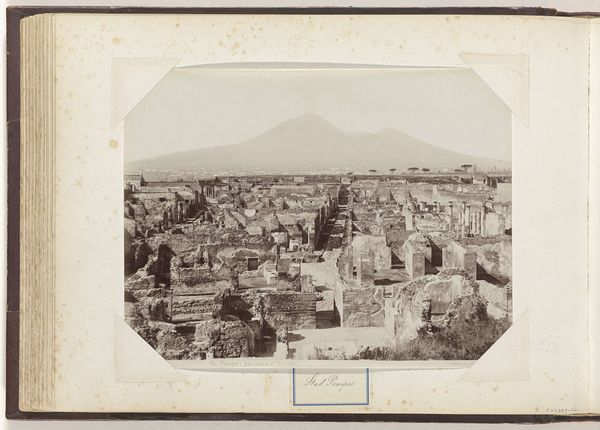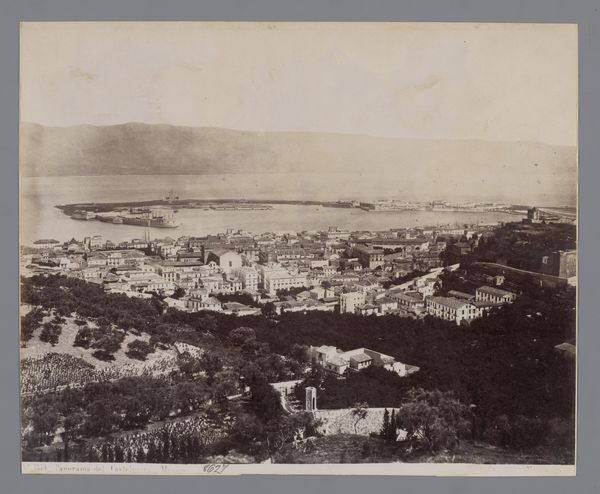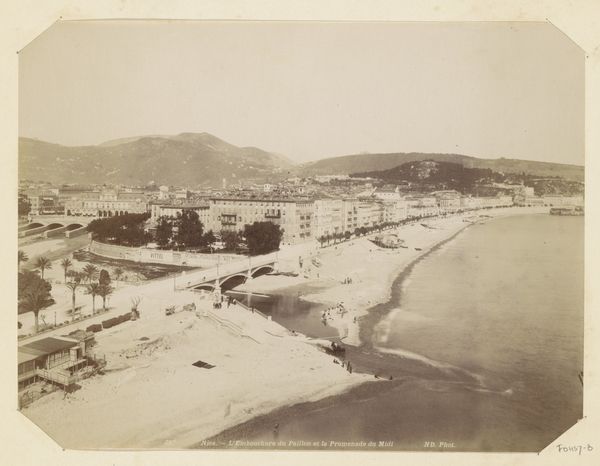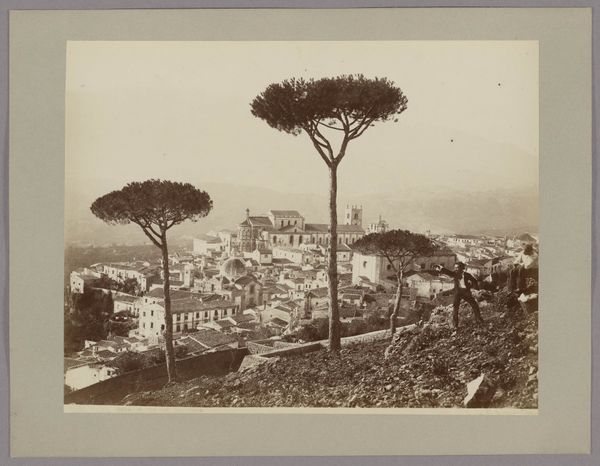![[Acropolis, Athens, Greece] by James Robertson](/_next/image?url=https%3A%2F%2Fd2w8kbdekdi1gv.cloudfront.net%2FeyJidWNrZXQiOiAiYXJ0ZXJhLWltYWdlcy1idWNrZXQiLCAia2V5IjogImFydHdvcmtzL2MxYWM3NTkyLWQyOTYtNDQzNC05NmM5LTlhNzVlM2MwZTM2Yy9jMWFjNzU5Mi1kMjk2LTQ0MzQtOTZjOS05YTc1ZTNjMGUzNmNfZnVsbC5qcGciLCAiZWRpdHMiOiB7InJlc2l6ZSI6IHsid2lkdGgiOiAxOTIwLCAiaGVpZ2h0IjogMTkyMCwgImZpdCI6ICJpbnNpZGUifX19&w=3840&q=75)
photography
#
greek-and-roman-art
#
photography
#
ancient-mediterranean
#
cityscape
Dimensions: Approx. 11 x 15
Copyright: Public Domain
This view of the Acropolis in Athens was captured by James Robertson using the wet collodion process, a method that dominated photography in the mid-19th century. It involved coating a glass plate with light-sensitive chemicals, exposing it in the camera while still wet, and then developing it immediately. The resulting print, like this one, has a distinctive tonal range and clarity, but the process was labor-intensive. It required a portable darkroom, careful timing, and expertise in handling hazardous materials. The final image bears the mark of this complex process. Robertson, who spent much of his career working for the Ottoman mint, would have needed not only artistic skill but also technical knowledge to produce this view. In this sense, the photograph bears witness to the intersection of art, science, and industry in the 19th century. It is not just a record of a place, but also of the methods and materials used to represent it. By understanding these, we can appreciate the photograph as both a historical document and a testament to human ingenuity.
Comments
No comments
Be the first to comment and join the conversation on the ultimate creative platform.
